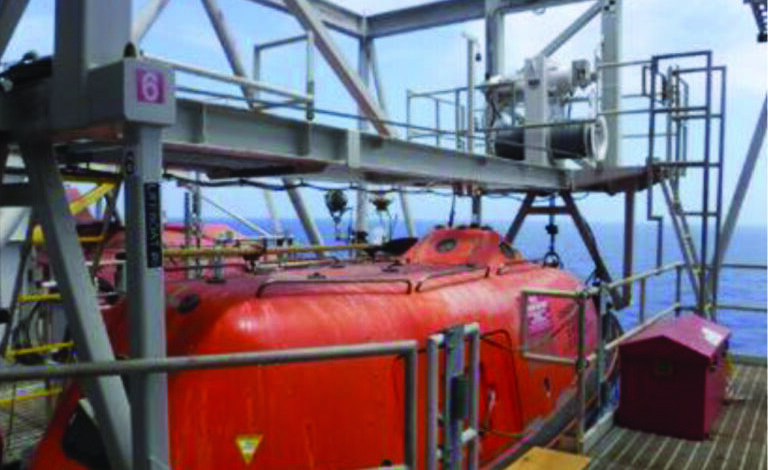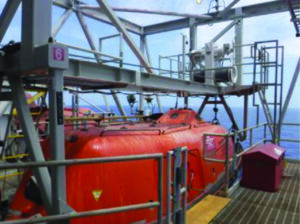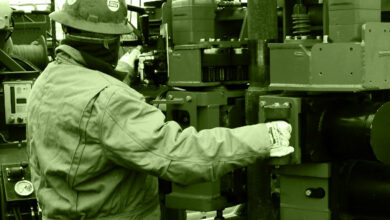Wirelines


Aft hook failure cited in USCG report on Shell Auger tension leg platform incident
In December, the US Coast Guard (USCG) issued a report summarizing the results of its investigation into a 2019 lifeboat incident from Shell’s Auger tension leg platform. The incident involved a lifeboat being inadvertently released during a launch and retrieval drill, falling 80 ft into the US Gulf of Mexico. Two people died, and a third was seriously injured.
In its report, the USCG said the primary factor that directly contributed to the incident was the complete separation of the aft hook control cable conduit surrounding the inner member.
The report stated the “initiating event” for the incident was when the locking shaft on the aft hook moved from the “almost open” to the open position, causing the aft hook to open under load and release from the lift ring. The USCG determined that it was probable that the crew cycled the hooks, moving them from an open to a closed position, twice while in the water on the morning of the incident. This exposed an already compromised cable conduit to additional stresses, including compressing and stretching.
According to the report, it was probable that during the closing action of the second cycling event, the conduit, already weakened and damaged, separated. As a result, when the system was reset, the locking shaft on the aft hook did not return to the closed position but came to rest in an “almost open” position. In this position, the hook could support the weight of the lifeboat and its occupants.
However, additional forces were applied to the hook and the boat as a result of the winch pulling the boat up against the davit bumper. This caused the locking shaft to rotate from the “almost open” position to the open position. The forward hook and its connections inside the boat were not designed to bear the entire load of the lifeboat beyond an even keel; thus, they were unable to sustain the weight of the lifeboat.
Click here to read the full US Coast Guard report on the Shell Auger incident.
API updates GHG compendium for emissions reporting
Late last year, the American Petroleum Institute (API) updated its “Compendium of GHG Emissions Methodologies for the Natural Gas and Oil Industry,” a reference document used by companies and governments for creating methodologies to report GHG emissions from oil and gas operations. The fourth edition of the compendium includes expanded methodologies for LNG, as well as carbon capture, use and storage (CCUS).
First published in 2011, the compendium provides the methodology details for all oil and gas industry segments to consistently estimate direct emissions of greenhouse gases through the entire value chain. It has served as a resource for the US Environmental Protection Agency’s (EPA) National Inventor and Reporting Program. It has also been used by other government entities globally, including in Australia, Canada, Mexico and Singapore.
The new version of the compendium recognizes the evolving nature of greenhouse gas estimation and measurement. The updates include revised emission factors from field studies, including the latest work to provide new average methane emission factors for pneumatic controllers. In addition, the compendium includes expanded methodologies and information specific to LNG and emission factors for combustion that include CCUS.
Click here to access the updated API compendium.
IADC joins IPIECA to focus on growing ESG initiatives
IADC has become a member of IPIECA, an international nonprofit group that provides a forum for encouraging continuous improvement in the oil and gas industry’s environmental and social performance. IPIECA, established in 1974, is the only global association that involves both the upstream and downstream industry. It is also the industry’s principal channel of communication with the United Nations.
As IADC and its members bolster the industry’s efforts around ESG – through its Sustainability Committee and the Energy Efficiency Subcommittee under the Advanced Rig Technology Committee, the new IPIECA membership is expected to afford IADC members with opportunities to align initiatives and collaborate across the upstream and downstream industries to maximize impact.




